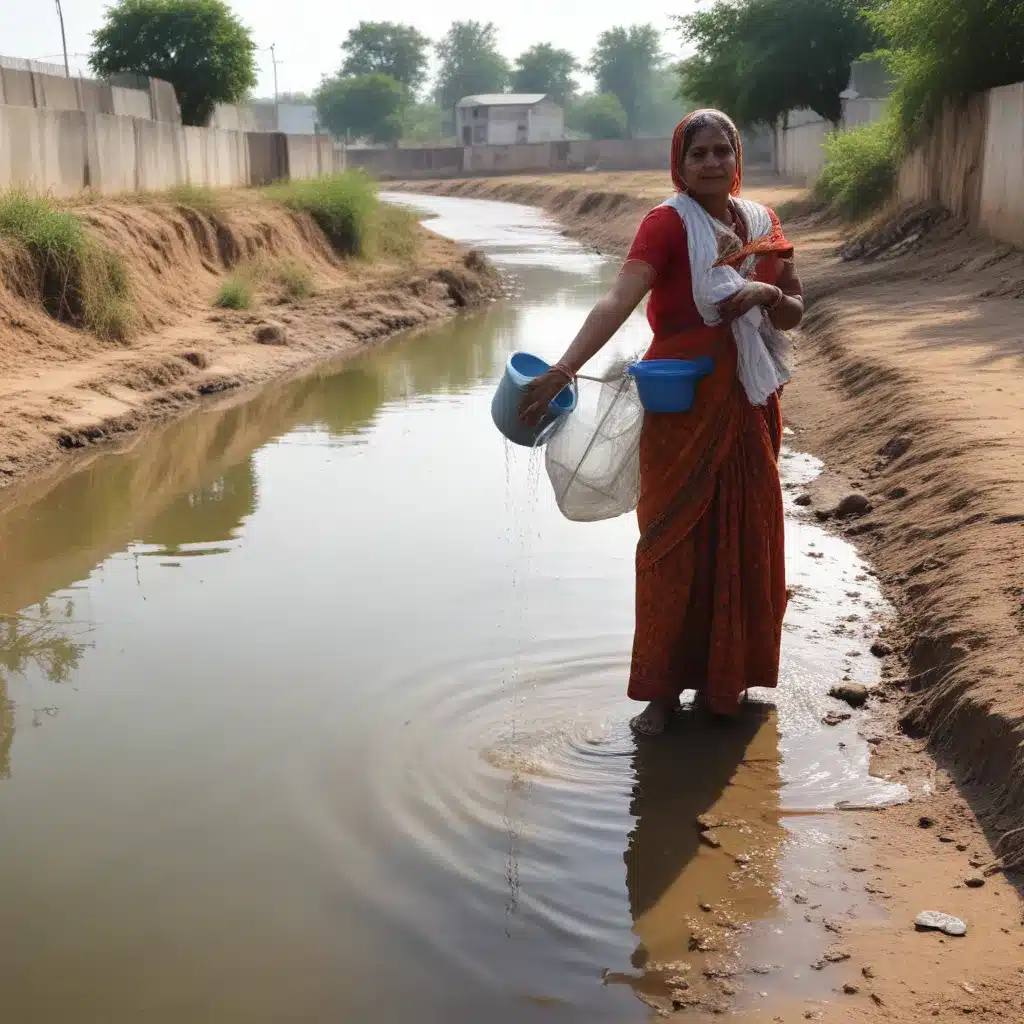
The Escalating Water Crisis in Hyderabad
Hyderabad, the bustling capital city of Telangana, is facing a severe water crisis that threatens the well-being of its residents and the sustainability of its development. As the city’s population has grown exponentially over the past decade, the demand for clean, reliable water has outpaced the available supply, leading to chronic shortages, rationing, and a growing reliance on groundwater extraction. This crisis has far-reaching implications, from public health concerns to economic disruptions, and calls for a comprehensive, collaborative approach to address the issue.
Identifying the Drivers of Hyderabad’s Water Woes
The roots of Hyderabad’s water crisis can be traced to a combination of factors, including:
-
Rapid Urbanization and Population Growth: Hyderabad’s population has surged in recent years, with the city’s metropolitan area now home to over 10 million people. This rapid influx of residents has placed immense pressure on the city’s water infrastructure, which was not designed to meet such escalating demand.
-
Climate Change and Erratic Rainfall Patterns: Hyderabad’s traditional water sources, such as the Musi River and local reservoirs, have been increasingly affected by the impacts of climate change, including prolonged droughts and irregular rainfall patterns. This has led to depleted surface water resources and a greater reliance on groundwater extraction.
-
Inefficient Water Management and Distribution: The city’s aging water distribution network is plagued by leaks, inefficiencies, and inadequate maintenance, leading to significant water losses and unequal access to water across different neighborhoods.
-
Groundwater Depletion and Contamination: The over-extraction of groundwater, combined with pollution and salinization, has led to a steady decline in groundwater levels and quality, further exacerbating the water crisis.
-
Lack of Wastewater Treatment and Recycling: Hyderabad’s wastewater treatment infrastructure is insufficient, with a significant portion of the city’s sewage being discharged into water bodies without proper treatment. This not only contaminates the available water sources but also represents a missed opportunity for water recycling and reuse.
Innovative Policy Interventions for Sustainable Water Management
To address the multi-faceted challenges of Hyderabad’s water crisis, a comprehensive and innovative policy approach is required. Several key interventions can be explored:
1. Sustainable Water Resource Management
Enhancing Surface Water Storage Capacity: The city should prioritize the construction of new reservoirs and the expansion of existing ones to increase its surface water storage capacity. This will help mitigate the impact of climate change-induced droughts and provide a more reliable water supply.
Groundwater Recharge and Management: Implementing groundwater recharge programs, such as rainwater harvesting and artificial aquifer recharge, can help replenish depleted aquifers. Strict regulations on groundwater extraction and policies to incentivize the use of treated wastewater for recharging groundwater can also contribute to sustainable groundwater management.
Wastewater Recycling and Reuse: Investing in the expansion and modernization of the city’s wastewater treatment infrastructure can enable the large-scale recycling and reuse of treated wastewater for non-potable applications, such as irrigation, industrial processes, and groundwater recharge.
2. Improving Water Distribution and Conservation
Upgrading Water Distribution Networks: Replacing aging pipelines, implementing smart metering systems, and improving leak detection and repair can significantly reduce water losses and ensure more equitable distribution of water across the city.
Promoting Water Conservation and Efficiency: Implementing water conservation measures, such as public awareness campaigns, incentives for the use of water-efficient appliances, and the adoption of water-saving technologies in households and industries, can help reduce water consumption and alleviate the strain on water resources.
Decentralized Water Management: Encouraging the development of community-based water management systems, where residents take an active role in monitoring and maintaining their local water resources, can foster a sense of ownership and responsibility, leading to more sustainable water use.
3. Strengthening Governance and Stakeholder Engagement
Integrated Water Resource Management: Establishing a comprehensive, cross-sectoral water management framework that coordinates the efforts of various government agencies, water utilities, and community stakeholders can help streamline decision-making, optimize resource allocation, and ensure holistic and sustainable water management.
Enhancing Community Participation: Engaging local communities, civil society organizations, and marginalized groups in the planning and implementation of water management strategies can help ensure that their needs and concerns are addressed, fostering a sense of ownership and commitment to the solutions.
Capacity Building and Knowledge Sharing: Investing in the training and capacity building of water professionals, policymakers, and community representatives can enhance their understanding of innovative water management approaches and enable the effective implementation of sustainable solutions.
4. Leveraging Technological Innovations
Smart Water Metering and Monitoring: Deploying smart water meters and advanced monitoring systems can provide real-time data on water usage, leaks, and distribution challenges, enabling more informed decision-making and targeted interventions.
Artificial Intelligence and Machine Learning: Applying AI and ML techniques to water management can help optimize resource allocation, predict and respond to demand patterns, and identify potential inefficiencies or contamination issues within the water distribution network.
Nature-Based Solutions: Integrating green infrastructure, such as urban wetlands, permeable surfaces, and urban forests, can help enhance groundwater recharge, reduce surface water runoff, and improve water quality, while also providing additional environmental and social benefits.
Collaborative Efforts for a Water-Secure Future
Addressing Hyderabad’s water crisis requires a multi-stakeholder, collaborative approach that brings together government agencies, water utilities, research institutions, civil society organizations, and community representatives. By leveraging innovative policy interventions, technological advancements, and inclusive governance models, the city can work towards a more sustainable and equitable water future.
Through the implementation of these comprehensive strategies, Hyderabad can not only overcome its current water challenges but also serve as a model for other cities facing similar issues. By prioritizing sustainable water resource management, improving distribution and conservation efforts, strengthening governance and stakeholder engagement, and embracing technological innovations, Hyderabad can ensure water security for its growing population and foster a resilient, prosperous, and environmentally sustainable urban development.
The Joint Action for Water blog applauds Hyderabad’s commitment to tackling its water crisis and encourages other cities to learn from the innovative policy interventions explored in this article. By working together and sharing best practices, we can collectively build a more water-secure future for communities around the world.

